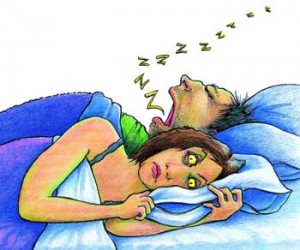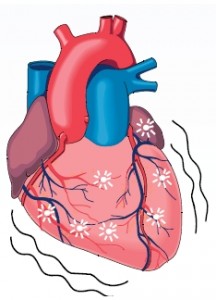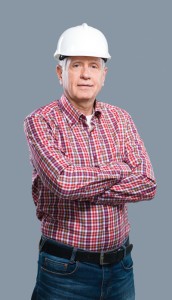 With more baby boomers postponing retirement, the effects of an aging workforce are becoming a concern for many organizations. By 2020, it is projected that 25% of workers will be over the age of 55, and since older workers are more likely to have disabilities, employers will have to adjust to meet the shifting needs of their workforce. According to a survey by the Disability Management Employer Coalition and Cornell University’s Employment and Disability Institute, most employers recognize the issue. Just over 85% said they were very or somewhat concerned about the impact of an aging workforce. However, their concern has not translated into universal action-—64% of businesses have not considered the aging workforce in designing absence and disability management programs. To close this gap, researchers suggested that employers concentrate on certain key elements of disability management, including practicing flexibility in scheduling and work location, maintaining and enhancing benefits, implementing wellness and return-to-work programs, instituting proactive safety checks, making certain physical and strategic accommodations for older workers, and improving corporate communication and culture to take an aging workforce into consideration.
With more baby boomers postponing retirement, the effects of an aging workforce are becoming a concern for many organizations. By 2020, it is projected that 25% of workers will be over the age of 55, and since older workers are more likely to have disabilities, employers will have to adjust to meet the shifting needs of their workforce. According to a survey by the Disability Management Employer Coalition and Cornell University’s Employment and Disability Institute, most employers recognize the issue. Just over 85% said they were very or somewhat concerned about the impact of an aging workforce. However, their concern has not translated into universal action-—64% of businesses have not considered the aging workforce in designing absence and disability management programs. To close this gap, researchers suggested that employers concentrate on certain key elements of disability management, including practicing flexibility in scheduling and work location, maintaining and enhancing benefits, implementing wellness and return-to-work programs, instituting proactive safety checks, making certain physical and strategic accommodations for older workers, and improving corporate communication and culture to take an aging workforce into consideration.
Category: Health
What is E. coli?
 Escherichia coli (E. coli) bacteria normally live in the intestines of people and animals. Most E. coli are harmless and actually are an important part of a healthy human intestinal tract. However, some E. coli are pathogenic, meaning they can cause illness, either diarrhea or illness outside of the intestinal tract. The types of E. coli that can cause diarrhea can be transmitted through contaminated water or food, or through contact with animals or persons.
Escherichia coli (E. coli) bacteria normally live in the intestines of people and animals. Most E. coli are harmless and actually are an important part of a healthy human intestinal tract. However, some E. coli are pathogenic, meaning they can cause illness, either diarrhea or illness outside of the intestinal tract. The types of E. coli that can cause diarrhea can be transmitted through contaminated water or food, or through contact with animals or persons.
Truck Drivers and Sleep Apnea
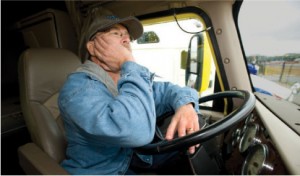 Truck drivers must have adequate restful sleep to be safe and effective at their job. According to the FMCSA says that up to 28 percent of all U.S. CDL holders have sleep apnea.
Truck drivers must have adequate restful sleep to be safe and effective at their job. According to the FMCSA says that up to 28 percent of all U.S. CDL holders have sleep apnea.
Sleep apnea is a danger to everyone, truck driver and others alike. Sleep apnea is a condition where the upper airway narrows or closes during sleep. This causes a person to wake repeatedly during his/her sleep, which makes their sleep not restful.
Job Stress and Health
 Stress sets off an alarm in the brain, which responds by preparing the body for defensive action. The nervous system is aroused and hormones are released to sharpen the senses, quicken the pulse, deepen respiration, and tense the muscles. This response (sometimes called the fight or flight response) is important because it helps us defend against threatening situations. The response is preprogrammed biologically. Everyone responds in much the same way, regardless of whether the stressful situation is at work or home.
Stress sets off an alarm in the brain, which responds by preparing the body for defensive action. The nervous system is aroused and hormones are released to sharpen the senses, quicken the pulse, deepen respiration, and tense the muscles. This response (sometimes called the fight or flight response) is important because it helps us defend against threatening situations. The response is preprogrammed biologically. Everyone responds in much the same way, regardless of whether the stressful situation is at work or home.
Short-lived or infrequent episodes of stress pose little risk. But when stressful situations go unresolved, the body is kept in a constant state of activation, which increases the rate of wear and tear to biological systems. Ultimately, fatigue or damage results, and the ability of the body to repair and defend itself can become seriously compromised. As a result, the risk of injury or disease escalates.
via CDC – NIOSH Publications and Products – STRESS…At Work (99-101).
Benefits of Regular Exercise
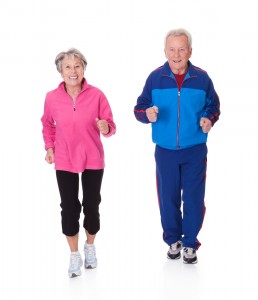 You know regular exercise is good for you. Here are a few of the benefits:
You know regular exercise is good for you. Here are a few of the benefits:
- Reduces your risk of heart disease, high blood pressure, osteoporosis, diabetes, and obesity
- Keeps joints, tendons, and ligaments flexible, which makes it easier to move around
- Reduces some effects of aging, especially the discomfort of osteoarthritis
- Contributes to mental well-being
- Helps relieve depression, stress, and anxiety
- Increases your energy and endurance
- Helps you sleep better
- Helps you maintain a normal weight by increasing your metabolism (the rate you burn calories)
What are Bloodborne Pathogens?
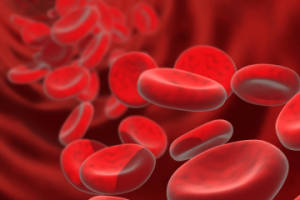 Bloodborne pathogens are infectious microorganisms in human blood that can cause disease in humans. These pathogens include, but are not limited to, hepatitis B (HBV), hepatitis C (HCV) and human immunodeficiency virus (HIV). Needlesticks and other sharps-related injuries may expose workers to bloodborne pathogens. Workers in many occupations, including first aid team members, housekeeping personnel in some industries, nurses and other healthcare personnel may be at risk of exposure to bloodborne pathogens.
Bloodborne pathogens are infectious microorganisms in human blood that can cause disease in humans. These pathogens include, but are not limited to, hepatitis B (HBV), hepatitis C (HCV) and human immunodeficiency virus (HIV). Needlesticks and other sharps-related injuries may expose workers to bloodborne pathogens. Workers in many occupations, including first aid team members, housekeeping personnel in some industries, nurses and other healthcare personnel may be at risk of exposure to bloodborne pathogens.
via Safety and Health Topics | Bloodborne Pathogens and Needlestick Prevention.
What Is Sleep Apnea?
Beware Health Risk Factors
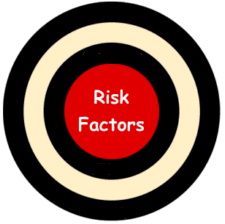 There are key health risk factors that can rob you of your health. Ignoring them by not taking action to control them will likely shorten your years and bring on unnecessary pain and suffering. They are:
There are key health risk factors that can rob you of your health. Ignoring them by not taking action to control them will likely shorten your years and bring on unnecessary pain and suffering. They are:
- Alcohol consumption
- Cigarette smoking/tobacco use
- Elevated cholesterol/diet
- High blood pressure
- Illicit drug use
- Physical activity/inactivity
- Overweight/obesity
How Can I Protect My Children from the Sun?
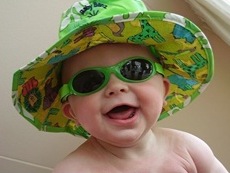 Just a few serious sunburns can increase your child’s risk of skin cancer later in life. Kids don’t have to be at the pool, beach, or on vacation to get too much sun. Their skin needs protection from the sun’s harmful ultraviolet (UV) rays whenever they’re outdoors.
Just a few serious sunburns can increase your child’s risk of skin cancer later in life. Kids don’t have to be at the pool, beach, or on vacation to get too much sun. Their skin needs protection from the sun’s harmful ultraviolet (UV) rays whenever they’re outdoors.
- Seek shade. UV rays are strongest and most harmful during midday, so it’s best to plan indoor activities then. If this is not possible, seek shade under a tree, an umbrella, or a pop-up tent. Use these options to prevent sunburn, not to seek relief after it’s happened.
- Cover up. Clothing that covers your child’s skin helps protect against UV rays. Although a long-sleeved shirt and long pants with a tight weave are best, they aren’t always practical. A T-shirt, long shorts, or a beach cover-up are good choices, too—but it’s wise to double up on protection by applying sunscreen or keeping your child in the shade when possible.
- Get a hat. Hats that shade the face, scalp, ears, and neck are easy to use and give great protection. Baseball caps are popular among kids, but they don’t protect their ears and neck. If your child chooses a cap, be sure to protect exposed areas with sunscreen.
- Wear sunglasses. They protect your child’s eyes from UV rays, which can lead to cataracts later in life. Look for sunglasses that wrap around and block as close to 100% of both UVA and UVB rays as possible.
- Apply sunscreen. Use sunscreen with at least SPF 15 and UVA and UVB protection every time your child goes outside. For the best protection, apply sunscreen generously 30 minutes before going outdoors. Don’t forget to protect ears, noses, lips, and the tops of feet.
Take sunscreen with you to reapply during the day, especially after your child swims or exercises. This applies to waterproof and water-resistant products as well.
Follow the directions on the package for using a sunscreen product on babies less than 6 months old. All products do not have the same ingredients; if your or your child’s skin reacts badly to one product, try another one or call a doctor. Your baby’s best defense against sunburn is avoiding the sun or staying in the shade.
Keep in mind, sunscreen is not meant to allow kids to spend more time in the sun than they would otherwise. Try combining sunscreen with other options to prevent UV damage.
via CDC – How Can I Protect My Children from the Sun? – Skin Cancer.
Ventricular fibrillation is Life-threatening
Ventricular fibrillation (v-fib for short) is the most serious cardiac rhythm disturbance. The lower chambers quiver and the heart can’t pump any blood, causing cardiac arrest.
How it works
The heart’s electrical activity becomes disordered. When this happens, the heart’s lower (pumping) chambers contract in a rapid, unsynchronized way. (The ventricles “flutter” rather than beat.) The heart pumps little or no blood. Collapse and sudden cardiac arrest follows — this is a medical emergency!
Signs of cardiac arrest
- Sudden loss of responsiveness (no response to tapping on shoulders)
- No normal breathing (the victim does not take a normal breath when you tilt the head up and check for at least five seconds)
- This is sudden cardiac arrest (SCA) — which requires immediate medical help (CPR and defibrillation)!
Treatment for cardiac arrest caused by ventricular fibrillation
- Ventricular fibrillation can be stopped with a defibrillator, which gives an electrical shock to the heart. If you see someone experiencing the signs of cardiac arrest:
- Tell someone to call 9-1-1 and get an automated external defibrillator (AED) if one is available. You begin CPR immediately.
- If you are alone with an adult who has these signs of cardiac arrest, call 9-1-1 and get an AED (if one is available) before you begin CPR.
- Use an AED as soon as it arrives.
- Continue CPR until trained emergency medical help arrives.

